1962 Ford Custom Cab
1962 Ford Other Pickups for sale in Costa Mesa, California, United States
| Condition: | Used |
| Item location: | Costa Mesa, California, United States |
| Make: | Ford |
| Model: | Other Pickups |
| Type: | Standard Cab Pickup |
| Trim: | 2door pickup |
| Year: | 1962 |
| Mileage: | 46,325 |
| VIN: | F10CK213707 |
| Color: | Black |
| Engine size: | 351 - V8 |
| Number of cylinders: | 8 |
| Transmission: | Manual |
| Drive type: | RWD |
| Interior color: | Red |
| Vehicle Title: | Clear |
| Want to buy? | Contact seller! |
Description for Ford Other Pickups 1962
Los Angeles Porsche Speedster Dealers Los Angeles Used Porsche Dealer HOURS OF OPERATION9am - 5pm Monday - Friday
10am - 2pm Saturday
Closed Sunday
Or by appointment
1665 Babcock Street,
Costa Mesa, A
92627 USA.
Tel 949-650-4718
Fax 949-650-5881 Contact us about this inventory item
1962 Ford Custom Cab
History The design of Ford's F-Series is like a taproot, ith each previous generation forming the basis for the growth of the next. Engines, ransmissions and chassis carry over from one generation to the next, ith major redesigns often happening independently of body styles.
Some features, ike the Twin I-Beam front suspension, ould prove to be central to the continued growth of the brand, panning generations from its introduction in 1965 up through today's two-wheel drive Super Duty. Others, uch as the 3.8-liter Essex V-6 launched in 1982, roved to be offshoot tendrils that lasted less than two years.
Then there are some designs that were so out there, o far ahead of their time, o far ahead of the technology needed to make them work properly that it's hard to believe Ford's engineers managed to get them off the ground. Such designs were the one-piece unibody trucks, vailable on the fourth-generation F-100 and F-250, hat would leave some serious cricks and crags in the F-Series' lineage. Ford originally referred to them as the “integrated pickup,” but calling them “unibodies” is a bit of a misnomer. The nickname derives from the fact that the cab and box are one continuous piece, ith no gap between them. The same stamping forming the back of the cab was also the leading edge of the bed, nd the single-wall bed sides were spot-welded directly to the door sills. The one-piece body was then set atop a traditional frame-style chassis, aking the unibody pickup more similar to a body-on-frame car than a true unitized assembly, ike the contemporaryFalcon-based Ranchero.
Why Ford chose such a risky design direction for its flagship pickup is the result of several factors. There's the ever-present matter of cost – the unibody truck required fewer stampings, ewer welds and a less complicated path through the assembly plant's paint shop. Then there was packaging. Eliminating the gap between the bed and the cab allowed a larger cargo loading area, nd promotional material bragged that the 1961 truck had 16 percent more load space than its predecessor.
But most important was Ford's desire to create a paradigm-shifting breakthrough. The company saw the market for pickup truck buyers expanding from farmers and tradesmen to include suburbanites who needed more versatility than what a station wagon could offer. Those buyers demanded the slickness of post-Atomic Age industrial design. By making the new F-Series more stylish and genteel, Ford hoped to reach out to previously untapped markets.
Advertisements focused on the new F-Series' carlike ride and refined interior, ith “five inches of foam” on the seat and 23 pounds of sound deadening in each cab. The cab doors were designed to swing wide, nd the knee-busting “dog leg” required on older trucks with wraparound windshields was eliminated. Dealer-installed “Polar-Aire” air conditioning was available, s was a large rear window that curved around the B-pillars and offered a panoramic view out of the cab. At the same time, ord couldn't alienate its existing base of F-Series buyers, any of whom ordered stripped-down trucks as farm vehicles or no-frills delivery beaters. Seat belts, irrors and even rear bumpers were optional.
Shortly after the trucks went on sale, uyers discovered that putting heavy cargo in the unibody trucks could cause the one-piece body to flex with interesting consequences. Stories percolating through the Internet tell of unibody owners who would load their trucks, nly to discover that the sills had distorted enough to jam the doors shut. Yet others tell tales of having a fully laden truck twist badly enough to pop a door open when crossing railroad tracks. Age and corrosion only exacerbated issues as the load-bearing bodies began to perforate and rust.Ford, hich had pinned its volume-selling models to the integrated design, as understandably panicked at potential issues surrounding the unibody. Midway through the 1962 model year, he company rushed a separate cab and bed into production as an alternative to the unibody. So last-minute was the conversion that Ford hadn't tooled up to produce a new bed, nstead sending 1962 and 1963 models down the line with the box from the 1960 F-Series, hich did not line up with the newer truck's swoopy lines. The unibody style would remain in production through the end of the 1963 model year, t which point the non-integrated styleside pickups were outselling it two-to-one. By 1964, ll Ford F-series trucks returned to the conventional arrangement. Despite being a dead-end tributary off the central F-Series root, he unibody trucks have since shown to be profoundly influential. The Chevrolet Avalanche body-on-frame sport utility truck, ntroduced as a concept at the 2000 North American International Auto Show, wes no small part of its design to the pioneering Ford. Yet beyond sharing unitized construction, he unibody F-100 also went after the Avalanche's target market decades before it became a driving force. Unfortunately for Ford, iming – in design, echnology and marketing – proved to be everything.
Vehicle Photos
Payment Information Payment for cars can be made in several ways. First, f you are planning to visit us you may wish to bring travelers checks or cash with you (U.S. Dollars). When buying a car over the telephone, ur customers usually wire transfer funds to our bank. There are also two companies we recommend for financing. Please contact us for details.
About European Collectibles Welcome to European Collectibles. We have the largest classic car showroom in Orange County. We are located in the city of Costa Mesa, alifornia, 5 miles south of Los Angeles International Airport. Since 1989, e have been selling imports world wide from Southern California. We try to maintain an up to date listing of all our cars. Our inventory reflects some of the finest imported sports cars in the world. Every car listed on Ebay is physically in our possession. Please feel free to contact or e-mail us if you have any questions! For more information about European Collectibles, lease visit our Ebay About Me page.
Shipping We arrange shipping to any destination worldwide. Fully enclosed or open transportation to the East Coast is easily arranged, verage cost of $850.00 to $1,500.00. For our international customers, n most circumstances, ars are packed into containers and secured in wooden frames to minimize the possibility of damage. The cost of shipping an average sized car to Antwerp, elixstowe or Bremen, or instance, s US$1,395.00. This price includes all costs from our showroom to the port of Antwerp, elixstowe or Bremen. The typical journey time from Los Angeles to most European destinations is five weeks, ncluding time for packing, oading and unloading.
Terms Of Sale
This vehicle is offered with a right to a personal inspection by any bidder or agent of any bidder. The Vehicle is being Sold by a Licensed State of California Dealer (European Collectibles, Inc. call us at 949-650-4718 to arrange an appointment), ll California DMV laws apply. Any California buyer must pay local CA sales tax and licensing fees. All other will do so in their home state. The vehicle is available for inspection prior to bidding. If you are the high bidder and unable to inspect said vehicle before auction close, ou or an agent will have (3) days to inspect said vehicle. I encourage a physical inspection strongly to avoid any misunderstandings or representations. Buyer has had the opportunity to view and inspect the vehicle and ask any and all questions. Buyer will pay for any and all transportation costs. We will assist you in arranging for transportation, ut you will be responsible for contact and payment directly with shipper. Prices will vary so check around if this is an issue. Shipping can take 7 to 14 + days due to scheduling. All sales are final. Buyer is purchasing this vehicle AS IS, HERE IS with no warranties implied or expressed.
Click here to view European Collectibles other auction listings!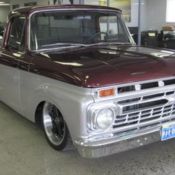 1962 Ford F-100 Custom Pickup
1962 Ford F-100 Custom Pickup
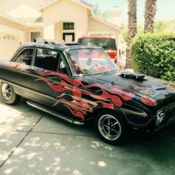 1962 Ford Falcon Custom Hot Rod
1962 Ford Falcon Custom Hot Rod
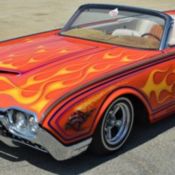 1962 CUSTOM FORD THUNDERBIRD
1962 CUSTOM FORD THUNDERBIRD
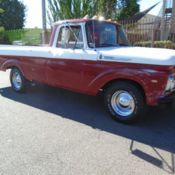 1962 Ford F-100 Custom Cab Unibody
1962 Ford F-100 Custom Cab Unibody
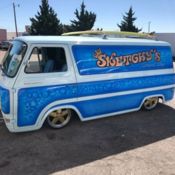 1962 Ford Econoline custom
1962 Ford Econoline custom
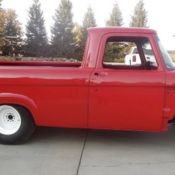 1962 FORD CUSTOM CAB PICK UP
1962 FORD CUSTOM CAB PICK UP
 1962 Ford F-100 Custom w/ 472 Cadillac Engine, TH400, Ford 9" A/C & More!
1962 Ford F-100 Custom w/ 472 Cadillac Engine, TH400, Ford 9" A/C & More!
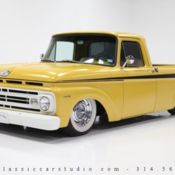 1962 Ford F-100 Custom w/ 472 Cadillac Engine, TH400, Ford 9" A/C & More!
1962 Ford F-100 Custom w/ 472 Cadillac Engine, TH400, Ford 9" A/C & More!
 1962 FORD CUSTOM CAB PICK UP UNIBODY
1962 FORD CUSTOM CAB PICK UP UNIBODY
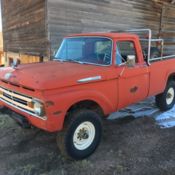 1962 Ford F-250 4x4 Custom Cab Pickup 390 v8 NO RESERVE
1962 Ford F-250 4x4 Custom Cab Pickup 390 v8 NO RESERVE